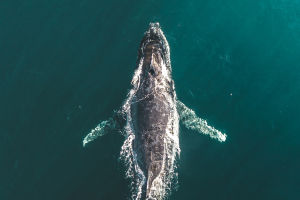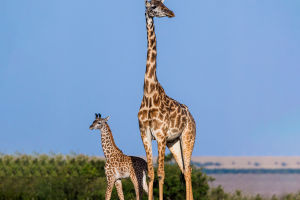Marvelous Mobula Rays
Graceful, mysterious, and a bit of a show-off — mobula rays are among the most fascinating creatures of the sea.
With their wing-like fins and sleek bodies, they glide through the ocean with the elegance of a dancer, often leaping high above the water in dramatic displays.
Commonly known as “devil rays” due to their cephalic fins resembling horns, these gentle giants captivate anyone lucky enough to witness their aerial acrobatics. Let's dive deeper into the world of the mobula rays, exploring their unique characteristics, behaviors, and the threats they face in the vast oceans.
What Are Mobula Rays?
Mobula rays are a group of marine animals closely related to the more famous manta rays. There are nine species within the genus Mobula, ranging from the small shortfin pygmy devil ray, which can grow up to 1.1 meters (3.6 feet), to the giant devil ray, which can reach a span of up to 5.2 meters (17 feet). Despite their large size and imposing appearance, mobula rays are completely harmless to humans and feed mainly on plankton, small fish, and tiny crustaceans.
Unique Features of Mobula Rays
1. Wing-like Fins: Mobula rays have pectoral fins that resemble wings, allowing them to “fly” through the water with graceful, flapping motions. These fins are incredibly flexible and help them change direction quickly while swimming.
2. Cephalic Fins: Mobula rays have two distinctive cephalic fins on either side of their head, which they use to help funnel plankton and other small prey into their mouths while feeding.
3. Mysterious Leaping Behavior: One of the most remarkable features of mobula rays is their tendency to leap out of the water, often in large groups. This behavior, which can result in spectacular acrobatic displays, is still a mystery to scientists. It could be a form of communication, a mating ritual, or even a way to dislodge parasites.
The Feeding Habits of Mobula Rays
Mobula rays are filter feeders, using their specialized gill rakers to strain tiny organisms from the water. They swim with their mouths open, capturing plankton, krill, and small fish. During feeding, they often perform somersaults and barrel rolls to maximize their intake of food, especially in nutrient-rich waters where plankton is abundant.
Habitat and Distribution
Mobula rays are found in tropical and temperate waters all over the world, including the Atlantic, Pacific, and Indian Oceans. They are typically found in open waters but can occasionally be spotted closer to shore, especially during breeding or feeding periods. Some species, like the giant devil ray, prefer deeper waters, while others, like the lesser devil ray, are more commonly found near coastal regions.
Why Do Mobula Rays Leap Out of the Water?
One of the most intriguing behaviors of mobula rays is their tendency to leap out of the water, sometimes as high as two meters (6.5 feet) into the air. The exact reasons for this behavior are still unknown, but several theories exist:
1. Communication: Some scientists believe that mobula rays leap to communicate with each other, perhaps signaling the presence of food or potential mates.
2. Parasite Removal: Leaping may help dislodge parasites or other irritants from their bodies.
3. Mating Rituals: The dramatic leaps and spins may be part of a courtship display, used to attract mates during the breeding season.
Devil Ray (Mobula mobular)
Video By WWF Mediterranean
Why Mobula Rays Matter
Mobula rays play a vital role in maintaining the health of marine ecosystems. As filter feeders, they help regulate plankton populations, contributing to the overall balance of the ocean's food web. They are also a key species for eco-tourism, attracting divers and snorkelers from around the world, which helps support local economies and promotes conservation efforts.
Hello Lykkers! If you ever get the chance to see mobula rays in their natural habitat, whether swimming gracefully beneath the waves or leaping spectacularly into the air, it is an experience you won’t forget. So next time you hear a splash or spot a shadow beneath the surface, keep an eye out — it might just be a mobula, dancing its way through the ocean.


